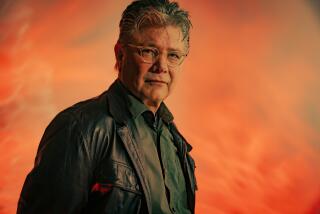‘Five Corners’ Knows Its Place and Has Its Says About It
- Share via
John Patrick Shanley, the author of “Moonstruck,” which seems as nearly perfect as a script ever gets (in terms of defining and realizing its romantic, comedic intention), is these days also represented on the screen by another of his works, “Five Corners.”
Directed by Tony Bill, “Five Corners” is linked with “Moonstruck” by its New York setting and by Shanley’s genius for conveying the way the people of that peculiar place live and think, feel, act and talk (or tawk or tork , as the case may be).
It is a more personal, daring, ambitious and tentative work. At a guess, it was written earlier. It has much more the impressionist feeling of a film envisioned as a film, less the feeling, which “Moonstruck” has, of being a succession of set-piece scenes, theatrically shaped.
The film is a mixture of the remembered realities of growing up in the Five Corners section of the Bronx in 1964, enriched by what might well be remembered daydreams presented as reality (a hated algebra teacher is felled by an arrow, a villain is thwarted by a later arrow, as in a dream of narrow escapes and happy endings).
The reminiscences hang from a hard narrative line of melodrama. One of the old neighborhood crowd, a wacko loner (John Turturro) comes home from prison to pursue his obsessive courting of Jodie Foster as the girl in the pet store.
(It is impossible to avoid thinking of John Hinckley’s real life obsession with Foster. Yet Shanley’s story is persuasive strictly on its own terms, and Foster’s acceptance of the role seems to indicate that she has put the tragedy behind her.)
Beyond the melodrama, “Five Corners” is fundamentally about coming of age in a time of change--change that affected the whole country but nowhere more dramatically than the Bronx.
There the older ethnic patterns of working-class and lower-middle-class Jews, Irish and Italians co-existing in seldom perfect harmony were to be sundered and reconstituted by the expansion of Harlem and Spanish Harlem.
Shanley is recollecting the old neighborhood as it was before wedding bells and everything else conspired to break up that old gang of his and made Five Corners some other place.
In the film, Martin Luther King Jr. is all over the television, and one of Shanley’s characters--perhaps his alter ego, played by Tim Robbins--is an idealistic and courageous young man who wants to go off and join the civil rights movement.
It involves a kind of hazing by humiliation to test his sincerity, but there’s no doubt he is riding the wave of the future. There is also no doubt, although it is understated, that social change, positive in the longer run, will bring its own tensions and dislocations to the neighborhood.
Much of the neighborhood, in fact, simply no longer exists. Bill shot in Astoria Park, Queens, which still looks as Five Corners did a quarter-century ago.
By its nature, diffused and documentary, ranged between serious comedy and farcical tragedy (Momma gets thrown from a window), “Five Corners” is unlikely to command the mass audiences of “Moonstruck.” Yet it is original, unpredictable and capturing.
The linking strength of both films is the power of the personal voice, Shanley’s, saying this is how things are, or were, and probably will be. The voice has been well translated by Bill and his ensemble (which also included Todd Graff as Foster’s boyfriend), just as “Moonstruck” was wonderfully interpreted by Norman Jewison and his cast.
The familiar moral, as of all film stories, is that it all begins on the scripted page.
More to Read
Only good movies
Get the Indie Focus newsletter, Mark Olsen's weekly guide to the world of cinema.
You may occasionally receive promotional content from the Los Angeles Times.










